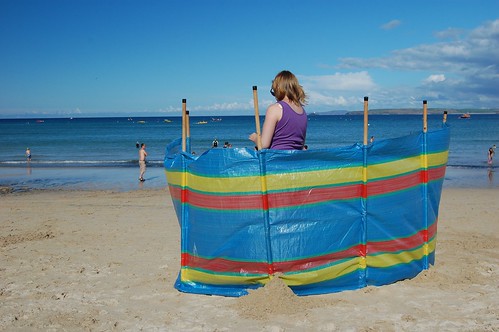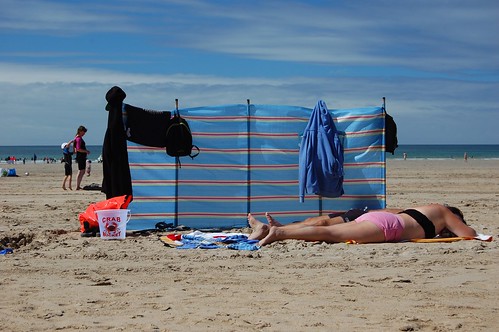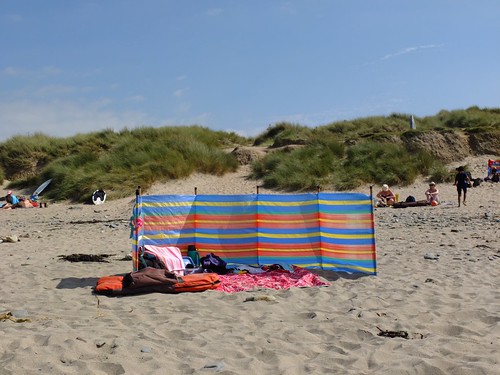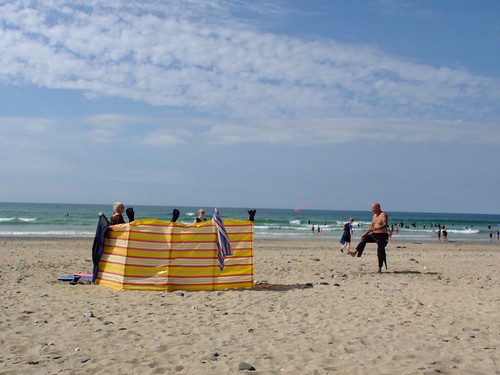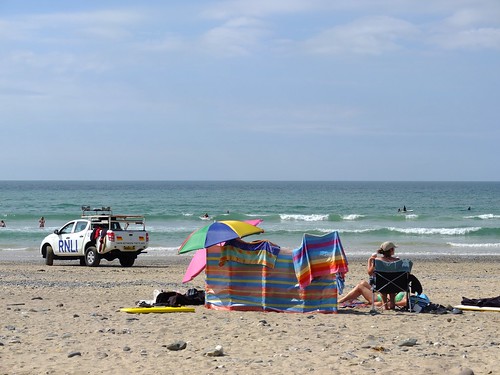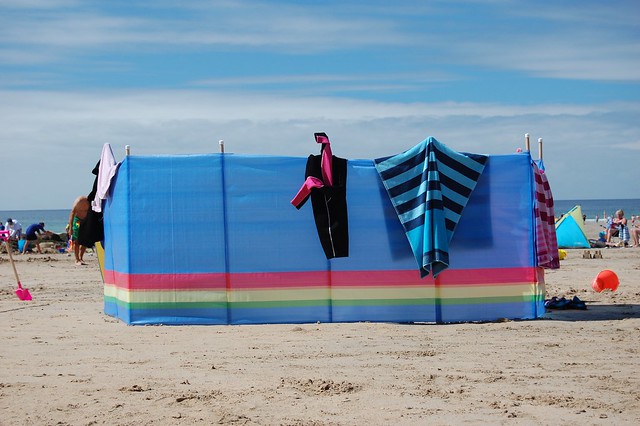Last summer I got a bit obsessed with windbreaks and started photographing them. I liked their colour, their Britishness, the opportunity they afforded for a bit of sub-Martin Parr brightly-coloured photography.
This year I see them in a slightly more jaundiced light. Yesterday I was sitting on that rarest thing – an almost windless, sunny Cornish beach. This is the same beach that Simon Armitage accurately describes in Walking Away; to walk along this beach is often to invite a sand-blasting by air that renders conversation impossible. But this day there was almost no wind at all – if anything it was too hot. And yet still the windbreaks came, each one blocking a bit more view.
This year I feel as if I should have counted the windbreaks last summer and seen Brexit coming… taken account of the effort that goes in to carrying multiple windbreaks down to the sand, to construct windbreak fortresses, villages and towns in some cases as extended families enclose an area of beach that is forever off-limits to outsiders – at least until the tide comes in and forces retreat. Windbreaks are exclusive, not inclusive. They are territorial, beach land-grabs that are sometimes hilariously counter-productive: on every beach there will be at least one windbreak that has been put up to catch not protect from the wind, one that blocks the view of the sea, one that falls flat on its face.
I am possibly guilty of hypocrisy, as I must confess we usually take a 2-person pop-up tent to the beach, which clearly must also block views. But we try to site it thoughtfully, and it does at least offer protection from the sun and privacy for changing, which a windbreak is about as much use for as an ashtray on a motorbike. Or on a windy beach.
Click on the image below to see the full gallery:

